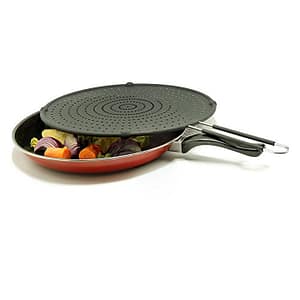
Blog Details

Beyond the Basics: 4 Surprising Herbs and Spices That Are Natural Pain Relievers
In our pursuit of well-being, we often reach for over-the-counter solutions when aches and pains strike. But what if your kitchen cabinet held a secret arsenal of natural remedies, passed down through generations, with the power to soothe discomfort? Beyond adding flavor to your dishes, many everyday herbs and spices boast impressive anti-inflammatory and analgesic (pain-relieving) properties.
While not a substitute for medical advice or severe pain, incorporating these natural wonders into your diet can offer surprising relief for common ailments like headaches, muscle soreness, and joint stiffness. Let’s delve into four surprising stars from your spice rack that could become your new go-to for natural comfort.
1. Turmeric: The Golden Anti-Inflammatory Powerhouse
You know it for its vibrant color in curries, but turmeric’s real superpower lies in its active compound, curcumin. This potent antioxidant and anti-inflammatory agent has been widely studied for its ability to reduce pain associated with conditions like arthritis, muscle soreness from exercise, and even some types of headaches.
- How it helps: Curcumin helps block inflammatory pathways in the body, similar to how some pharmaceutical pain relievers work, but without the common side effects.
- How to use it: Add fresh grated turmeric to smoothies or juices. Incorporate dried turmeric powder into soups, stews, rice dishes, or make a soothing “golden milk” latte. For optimal absorption, always consume turmeric with black pepper, which contains piperine, significantly enhancing curcumin’s bioavailability. A good spice grinder can help you get the freshest powder from whole turmeric root.
2. Ginger: The Warming Soother for Digestive and Muscle Pain
Beyond its zesty flavor in Asian cuisine, ginger has been a staple in traditional medicine for centuries, particularly for nausea and digestive upset. However, its powerful anti-inflammatory compounds, gingerols, also make it an effective natural pain reliever.
- How it helps: Ginger acts as a potent anti-inflammatory and has mild analgesic effects, making it beneficial for muscle pain, menstrual cramps, and even migraine relief. It also aids circulation, which can help ease stiffness.
- How to use it: Brew fresh ginger root into a calming tea, grate it into stir-fries, add it to salad dressings, or even chew on a small piece of candied ginger for quick relief. Keeping fresh ginger readily available with a quality peeler and grater makes it easy to incorporate daily.
3. Cloves: The Aromatic Numbness for Toothaches
You might associate cloves with holiday baking, but historically, they’ve been used as a natural anesthetic, especially for dental pain. The primary active compound, eugenol, is a powerful anti-inflammatory and analgesic.
- How it helps: Eugenol in cloves works as a natural topical anesthetic, numbing the affected area. It also has antiseptic properties, making it useful for minor oral discomfort.
- How to use it: For toothache relief, carefully place a whole clove near the affected tooth and allow it to soften, or dilute a drop of clove essential oil in a carrier oil (like olive oil) and apply it with a cotton swab. Incorporate whole or ground cloves into your cooking for their systemic benefits – they pair wonderfully with sweet potatoes, fruits, and meats.
4. Basil: More Than Just a Pizza Topping
While fresh basil is a culinary delight, its lesser-known medicinal properties are quite impressive. Compounds like eugenol (also found in cloves), citronellol, and linalool give basil anti-inflammatory and pain-relieving capabilities.
- How it helps: Studies suggest basil can help reduce swelling and pain, particularly in conditions related to inflammation. It’s also known for its calming effects, which can indirectly help with tension-related discomfort.
- How to use it: Use fresh basil generously in salads, pestos, sandwiches, and as a garnish for almost any savory dish. You can also brew basil leaves into a soothing tea. Growing a small herb garden on your windowsill can provide a fresh, continuous supply of this powerful herb.
While these herbs and spices offer incredible natural support, remember that they are complementary to a healthy lifestyle. If you experience chronic or severe pain, always consult with a healthcare professional. By consciously integrating these powerful ingredients into your daily routine, you’re not just adding flavor; you’re embracing a centuries-old tradition of natural healing, empowering your body to find relief right from your own kitchen.
Related Reading:
- “The Unexpected Kitchen Secret That Could Add Years to Your Life“ (Link to our previous blog on kitchen cleanliness)
FAQs About Herbs, Spices, and Pain Relief
Q1: Can these herbs and spices replace my pain medication?
A1: No, these herbs and spices are not meant to replace prescribed pain medication. They can be used as complementary natural remedies for mild to moderate pain or as part of a holistic wellness approach. Always consult your doctor before making changes to your medication.
Q2: How much of these spices should I consume for pain relief?
A2: There’s no one-size-fits-all dosage, as it depends on the individual and the concentration of the spice. For general health benefits and mild relief, incorporate them liberally into your daily cooking. For specific therapeutic doses, research individual supplements or consult with a healthcare professional or herbalist.
Q3: Are there any side effects or interactions I should be aware of?
A3: While generally safe in culinary amounts, high doses of some herbs/spices (like turmeric and ginger) can interact with blood thinners. Cloves should be used sparingly, especially essential oil. Always research potential interactions if you’re on medication or have underlying health conditions. Pregnant or breastfeeding women should also exercise caution and consult a doctor.
Q4: Is it better to use fresh or dried herbs and spices for medicinal benefits?
A4: Both fresh and dried forms offer benefits. Fresh herbs often have higher concentrations of certain volatile compounds, while dried spices can be more concentrated in others. The key is consistent intake. For spices like turmeric and ginger, using the dried powder is often practical, while for basil, fresh can be more potent.
Q5: Can I just take supplements of these spices instead?
A5: While supplements of compounds like curcumin (from turmeric) or gingerols are available, consuming the whole herb or spice in your diet provides a broader spectrum of beneficial compounds and fiber. Supplements can offer higher, concentrated doses but should be used under guidance, as they might have different effects than dietary intake.
Our Products
-
Unique Book Coffee Cup – Stack of Books Design
₹1,681.00 – ₹1,695.00Price range: ₹1,681.00 through ₹1,695.00 Select options This product has multiple variants. The options may be chosen on the product page -
Salt & Pepper Electric Grinder – Rechargeable
₹2,435.00 Select options This product has multiple variants. The options may be chosen on the product page -
Glass Storage Jar – Cork Lid & Minimalist Design
₹2,563.00 Select options This product has multiple variants. The options may be chosen on the product page -
Food grade Silicone Splash Screen – Mess-Free Cooking
₹2,158.00 Select options This product has multiple variants. The options may be chosen on the product page -
Stainless Steel Corn Cob Holders – Mess-Free
₹1,086.00 Select options This product has multiple variants. The options may be chosen on the product page -
Silicone Donut Mold – Makes 6 Non-Stick Donuts
₹833.00 Select options This product has multiple variants. The options may be chosen on the product page
Products
-
Unique Book Coffee Cup – Stack of Books Design
₹1,681.00 – ₹1,695.00Price range: ₹1,681.00 through ₹1,695.00 Select options This product has multiple variants. The options may be chosen on the product page -
Salt & Pepper Electric Grinder – Rechargeable
₹2,435.00 Select options This product has multiple variants. The options may be chosen on the product page -
Glass Storage Jar – Cork Lid & Minimalist Design
₹2,563.00 Select options This product has multiple variants. The options may be chosen on the product page -
Food grade Silicone Splash Screen – Mess-Free Cooking
₹2,158.00 Select options This product has multiple variants. The options may be chosen on the product page










